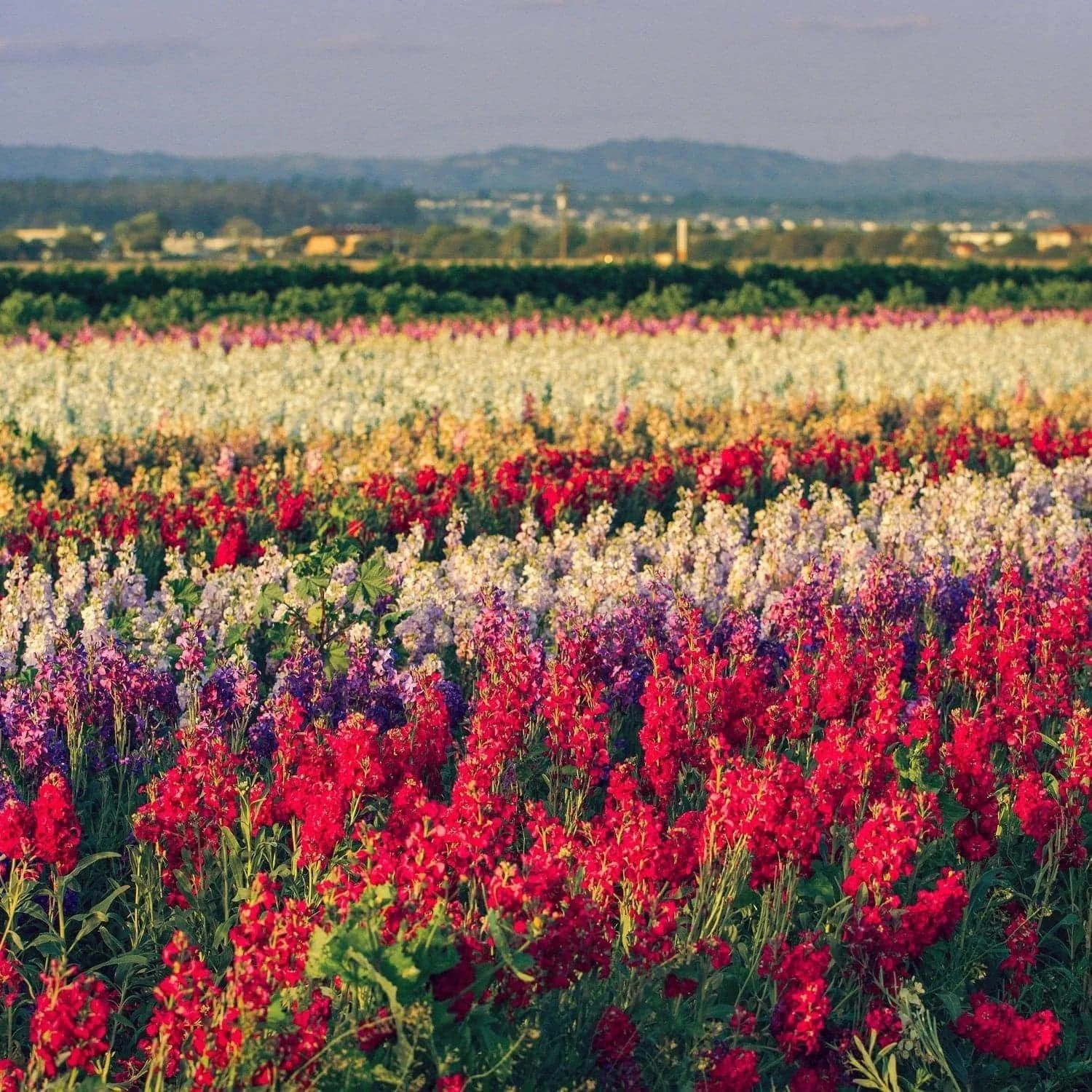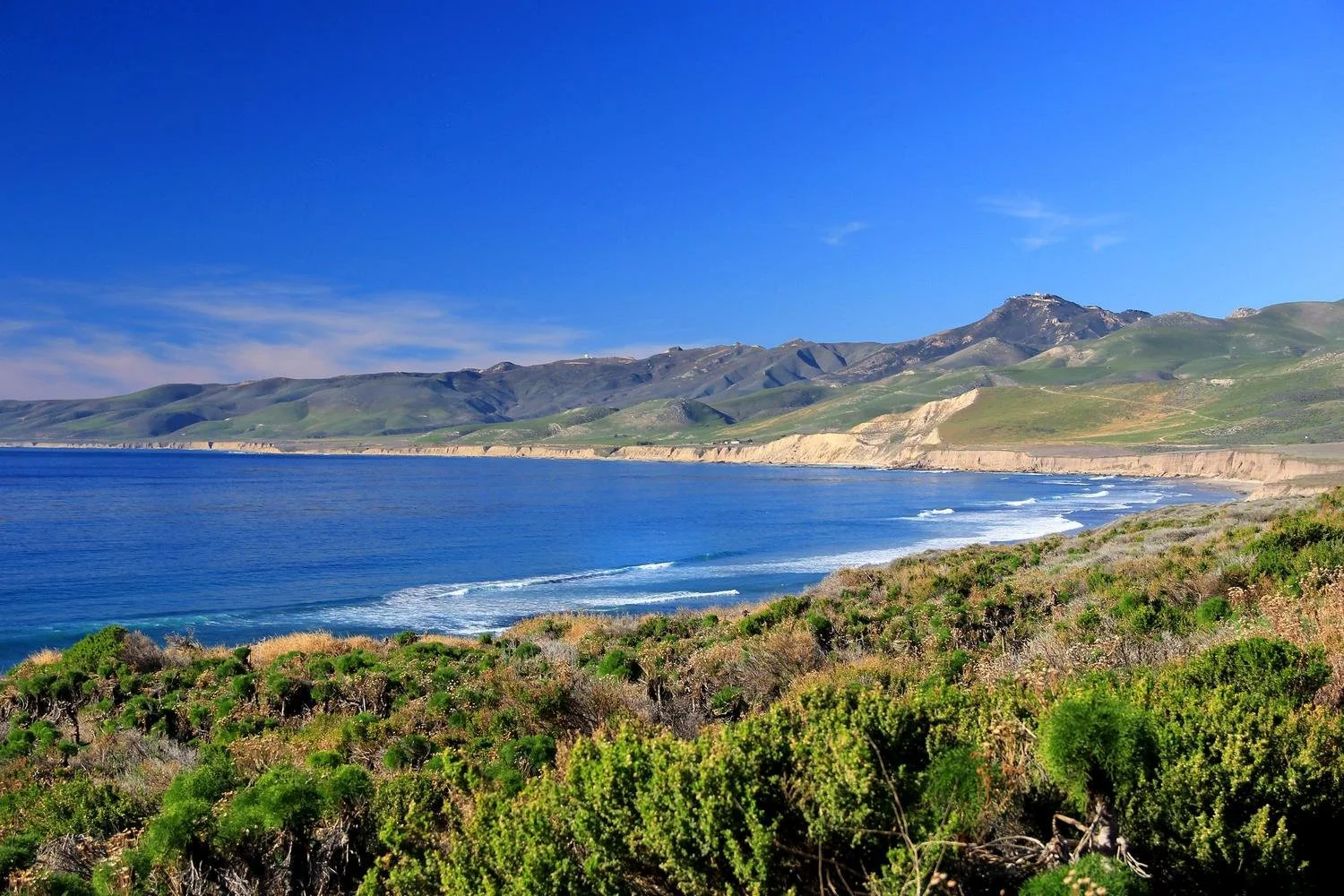
LOMPOC
As you enter Lompoc, the valley unfolds into a patchwork of vineyards, rolling hills, and fields that burst with color when the wildflowers are in bloom. The town’s streets are alive with vibrant murals, while the surrounding landscape blends rugged mountains with ocean breezes drifting in from the nearby coast. Known as the “City of Arts and Flowers,” Lompoc offers a rare mix of natural beauty, small-town charm, and Central Coast ease that leaves a lasting impression.
The story of Lompoc’s rise from a quiet valley town to the Central Coast’s hidden gem begins with its fertile fields and artistic spirit
When Spanish settlers and pioneering ranching families first arrived in the Lompoc Valley, they found a fertile plain nestled between rugged mountains and the Pacific Ocean. What captivated them then continues to captivate residents and visitors today: a mild climate, ocean breezes rolling across open fields, and a natural beauty that feels both expansive and untouched. Known today as the “City of Arts and Flowers,” Lompoc holds a character that is uniquely its own—quietly enchanting, deeply rooted in heritage, and alive with creativity.
But Lompoc’s allure runs far deeper than its agricultural bounty. The city’s streets are canvases for the imagination, with more than 40 outdoor murals telling stories of Chumash heritage, early settlers, and the community’s vibrant spirit. The annual Flower Festival celebrates its legacy as a hub for seed cultivation, while nearby vineyards showcase award-winning wines from the renowned Sta. Rita Hills AVA—one of the world’s premier cool-climate wine regions.
The coastline just west of town offers its own rugged beauty. Jalama Beach, with its sweeping cliffs and untamed surf, draws surfers, campers, and day-trippers eager for a taste of wild California. To the north lies Vandenberg Space Force Base, where rockets launch into the sky, adding a modern layer of wonder to Lompoc’s story. On any given day, the horizon might hold both the golden glow of a sunset and the luminous trail of a satellite piercing the night.
Today’s Lompoc blends its small-town soul with an adventurous spirit. Downtown hums with eclectic restaurants, local breweries, and art galleries that reflect the town’s creative heart. Farmers markets brim with local produce, while cycling routes and hiking trails invite exploration of the valley’s hills and coast. It’s a community where neighbors linger to chat at coffee shops, and where the pace of life seems just a little more forgiving than in California’s busier cities.
Surrounding neighborhoods offer their own stories. The historic La Purísima Mission, one of California’s most beautifully restored, stands as a living museum of the state’s Spanish past. The Wine Ghetto, an unassuming cluster of warehouses, has become a haven for boutique winemakers producing vintages that rival those of Napa and Sonoma. And just beyond the city, blankets of wildflowers transform the valley into a living painting each spring, drawing visitors from across the state.
What makes Lompoc truly special isn’t just its scenery or its heritage—it’s the way the town feels both grounded and open to possibility. Here, you might find yourself tasting wine poured by the winemaker who crafted it, chatting with an artist painting a new mural, or walking in the footsteps of California’s earliest settlers. It’s a place where history and progress, art and agriculture, earth and sky all meet in harmony.
For those who choose to make Lompoc home, they’re not simply settling in a town—they’re embracing a lifestyle rooted in authenticity, beauty, and community. In an era where so many places chase the same polished image, Lompoc remains defiantly real. It is not just a destination—it’s a discovery, a place where California’s heart beats quietly but powerfully, and where every sunrise over the valley feels like a promise of something new.


